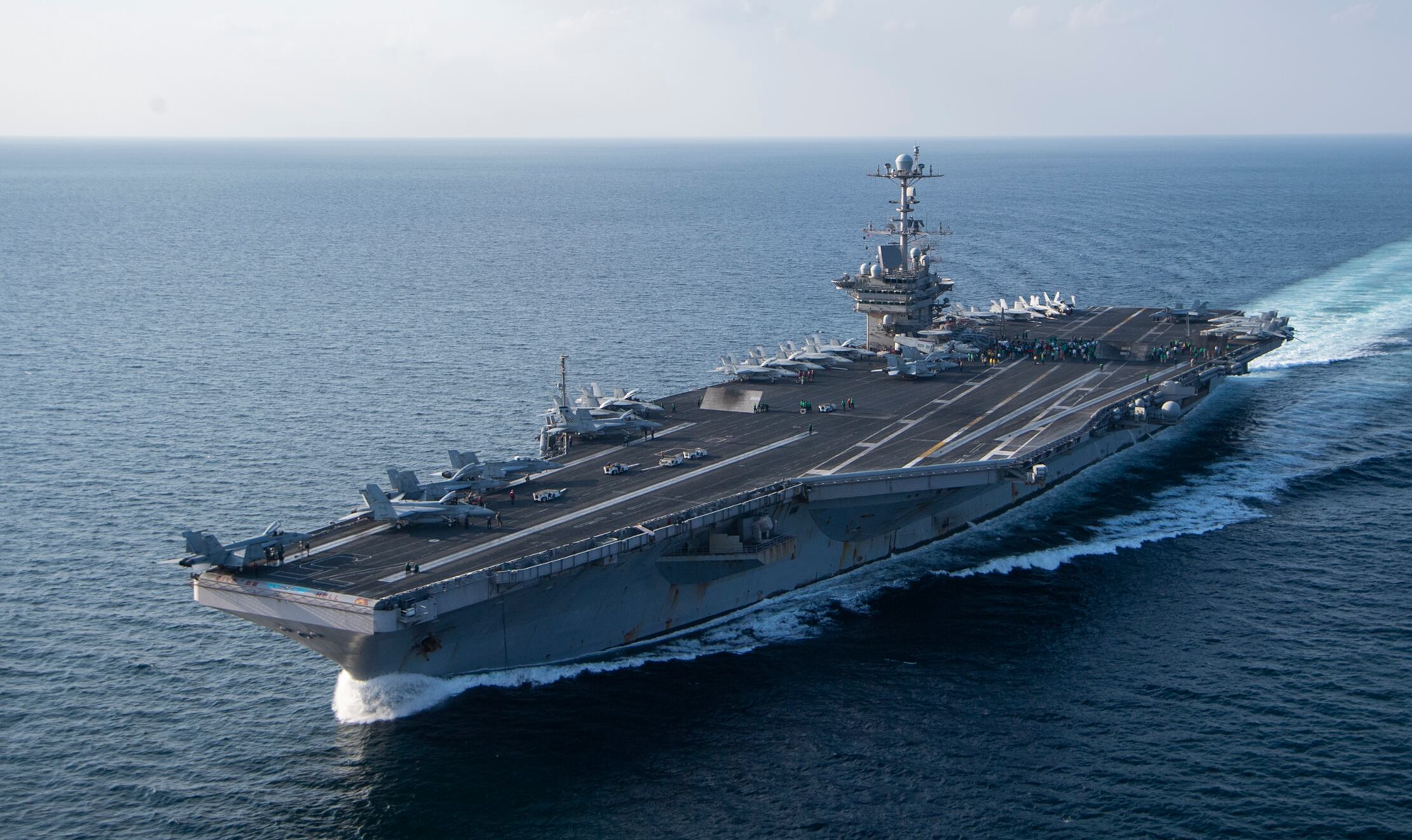WASHINGTON – In the wake of a report that the Biden administration is weighing retiring an aircraft carrier early to save money, lawmakers are warning the U.S. Navy and the White House that such a move is a non-starter.
“This is one of the things that gets revisited again and again, and I’ll tell you now that I will fight for the same outcome as last Congress,” said House Armed Services Committee Vice Chair Elaine Luria, D-Va., said Monday at a Hudson Institute event. “We’ve invested a lot in our carriers, and it’s not time to decommission them halfway through their life.”
Retiring an aircraft carrier early would save the Navy several billion dollars in both planned maintenance, personnel and operating costs over the remainder of the ship’s life, but such efforts have repeatedly been quashed by Congress going back at least a decade.
The Pentagon is expected to propose a budget that is essentially the same as last year’s, and to save money it is revisiting a Trump Administration proposal to cancel the carrier Harry S. Truman’s mid-life overhaul and nuclear reactor refueling, according to a report from USNI News.
In 2019, the Navy said it could save as much as $1.5 billion just in planning costs for the refueling, and when the Navy tried to cancel the George Washington’s midlife overhaul in 2013, it was estimated that retiring Washington would save a total of about $5 billion total for the years-long maintenance period.
But retiring a carrier with a planned 25 years left of service has always been a bridge too far for Congress, and there is little reason to believe a renewed attempt to retire Truman would be any more successful than the last two times DoD tried.
To Luria, considering retiring an aircraft carrier is a puzzling move in light of a building consensus that the Navy will, in some way, need to grow to meet an ever-expanding Chinese fleet, which already surpasses the U.S. Navy in raw ship count.
With less than four months left in the Trump administration, then-Defense Secretary Mark Esper unveiled a new vision for the Navy, called Battle Force 2045, that eclipsed previous plans to grow the fleet to 355 ships to instead grow it to more than 500 manned and unmanned vessels.
“The bottom line is getting rid of ships when you’re trying to build the Navy is not a smart decision, and I would like justification as to why,” Luria said.

Virginia home fires
In 2019, President Donald Trump’s Pentagon proposed cutting Truman as part of a plan to pivot to more unmanned technologies and to free up money for a planned two-carrier block-buy for the follow-on Ford class. But Trump reversed course after a bipartisan group of lawmakers opposed it, arguing the Truman has more than 20 years of life left and that U.S. law requires 11 carriers be in service.
Then, as now, lawmakers from Virginia – home to the country’s largest naval base and where spending makes up more than 10 percent of the economy – were leading the charge.
“As was made clear to the previous administration, retiring the USS Harry S. Truman two decades ahead of schedule would be a serious mistake given the capabilities it provides to the Navy,” Sen. Mark Warner, D-Va., said in a statement to Defense News.
In broader remarks Monday, Luria recommended extending the service-life of older types of ships while new classes of ships are being brought online. As opposed to the Battle Force 2045 plan, which called for aggressively decommissioning cruisers, Luria wanted a deeper analysis.
“In our pursuit of a larger fleet and more presence in the Pacific, you need to build more ships, we also need to maintain the ships that we have, and operate them as efficiently as possible,” she said. “And we need to quit getting rid of the ships we have that still have operational life left.”
The Virginia delegation’s opposition to retiring carriers is long lived. In 2010, when then-Defense Secretary Bob Gates suggested that the Navy didn’t need 11 aircraft carriers, then-Sen. Jim Webb, D-Va.,
Senate Readiness and Management Support Subcommittee Chair Tim Kaine, D-Va., pointed to the cost of recycling the nuclear carrier Enterprise ($1.5 billion) and recent 11 month deployment of the USS Nimitz to the Mideast and Pacific as proof carriers are “expensive to retire and remain in constant demand.”
“I am skeptical this proposal will yield savings or avoid severe operational impacts,” Kaine said in a statement.
Both Luria and the House Seapower and Projection Forces Subcommittee’s top Republican, Rep. Rob Wittman, also pointed to recent, lengthy carrier deployments to meet the demands of combatant commanders.
“It is obvious based on deployment schedule that we are breaking the fleet trying to supply the COCOMs the volume of carriers being requested — and now the Department is mulling removing one from circulation earlier?” Wittman, of Virginia, said in a statement to Defense News on Monday.
“I understand looking for savings, but this doesn’t pass the smell test. If the Department decides to attempt a to cancel an RCOH again, I am confident they will be met with a strong Congressional rebuke.”
Luria and Wittman each represent districts that touch the Hampton Roads region of Virginia. The Truman is homeported there at Naval Station Norfolk.
At a hearing last week, Wittman asked U.S. Indo-Pacific Command’s chief, Adm. Phil Davidson, if he thought it would make sense to remove a carrier from the fleet. Davidson replied, “There is no capability that we have that can substitute for an aircraft carrier in my view.”
Joe Gould was the senior Pentagon reporter for Defense News, covering the intersection of national security policy, politics and the defense industry. He had previously served as Congress reporter.
David B. Larter was the naval warfare reporter for Defense News.





